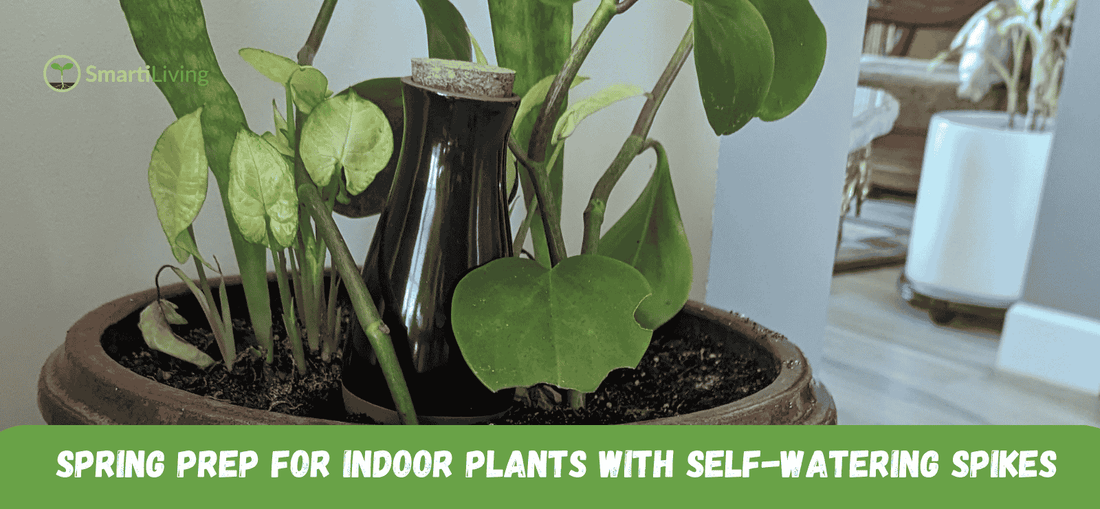
Prepping Your Indoor Plants for the Transition to Spring with Self-Watering Spikes
Share
As winter fades and spring approaches, indoor plants go through a major transition. Longer days, increased sunlight, and rising temperatures signal new growth, but they also bring new challenges—like fluctuating humidity and changing water needs.
To help your indoor plants adjust smoothly, using self-watering spikes can ensure consistent moisture while preventing overwatering or drying out. Here’s how to prepare your indoor plants for spring with this easy watering solution!
Why Spring is a Critical Time for Indoor Plants
🌞 Increased Sunlight = More Growth – Plants become more active, requiring more water and nutrients.
💦 Humidity Changes – Winter heating dries out indoor air, but spring brings inconsistent moisture levels.
🌱 Root & Leaf Growth Spikes – As plants wake up from dormancy, they need steady hydration to support new leaves.
What Are Self-Watering Spikes?
Self-watering spikes are slow-release watering devices that attach to a water-filled bottle or reservoir, delivering a steady supply of moisture to the soil.
How They Work:
- Attach a bottle filled with water to the spike.
- Insert the spike into the soil near the plant’s roots.
- Water slowly drips out, keeping the soil evenly moist.
They are perfect for houseplants, hanging baskets, and potted herbs, ensuring plants stay hydrated without daily watering.
How to Use Self-Watering Spikes for Spring Transition
🌱 Step 1: Check Your Plants' Water Needs
Plants that needed less water in winter may now need more frequent hydration. Self-watering spikes ensure a gradual increase instead of sudden overwatering.
💧 Step 2: Adjust for Sunlight & Humidity
Move plants to brighter areas as days get longer. Use self-watering spikes to prevent soil from drying out too quickly.
🪴 Step 3: Repot & Refresh Soil (If Needed)
If roots are crowded, repot your plant into a larger container. Add fresh soil to improve moisture retention.
🌞 Step 4: Monitor & Adjust as Temperatures Rise
Watering spikes release moisture gradually—refill as needed based on plant type. As summer approaches, plants may need larger reservoirs for consistent hydration.
Best Indoor Plants to Use with Self-Watering Spikes
✅ Peace Lilies – Thrive with steady moisture.
✅ Fiddle Leaf Figs – Prevents under- or overwatering.
✅ Pothos & Philodendrons – Prefers consistent hydration.
✅ Herbs (Basil, Mint, Parsley) – Keeps soil evenly moist.
✅ Spider Plants – Avoids drying out too quickly.
Final Thoughts: A Stress-Free Spring Transition for Your Plants
Spring is an exciting time for plant growth, but inconsistent watering can cause stress. Self-watering spikes help indoor plants transition smoothly by providing a steady water supply while preventing overwatering.
🌿 Make plant care easier this spring—try self-watering spikes for healthier, happier plants! Explore our collection of self-watering systems at SmartiLiving.
